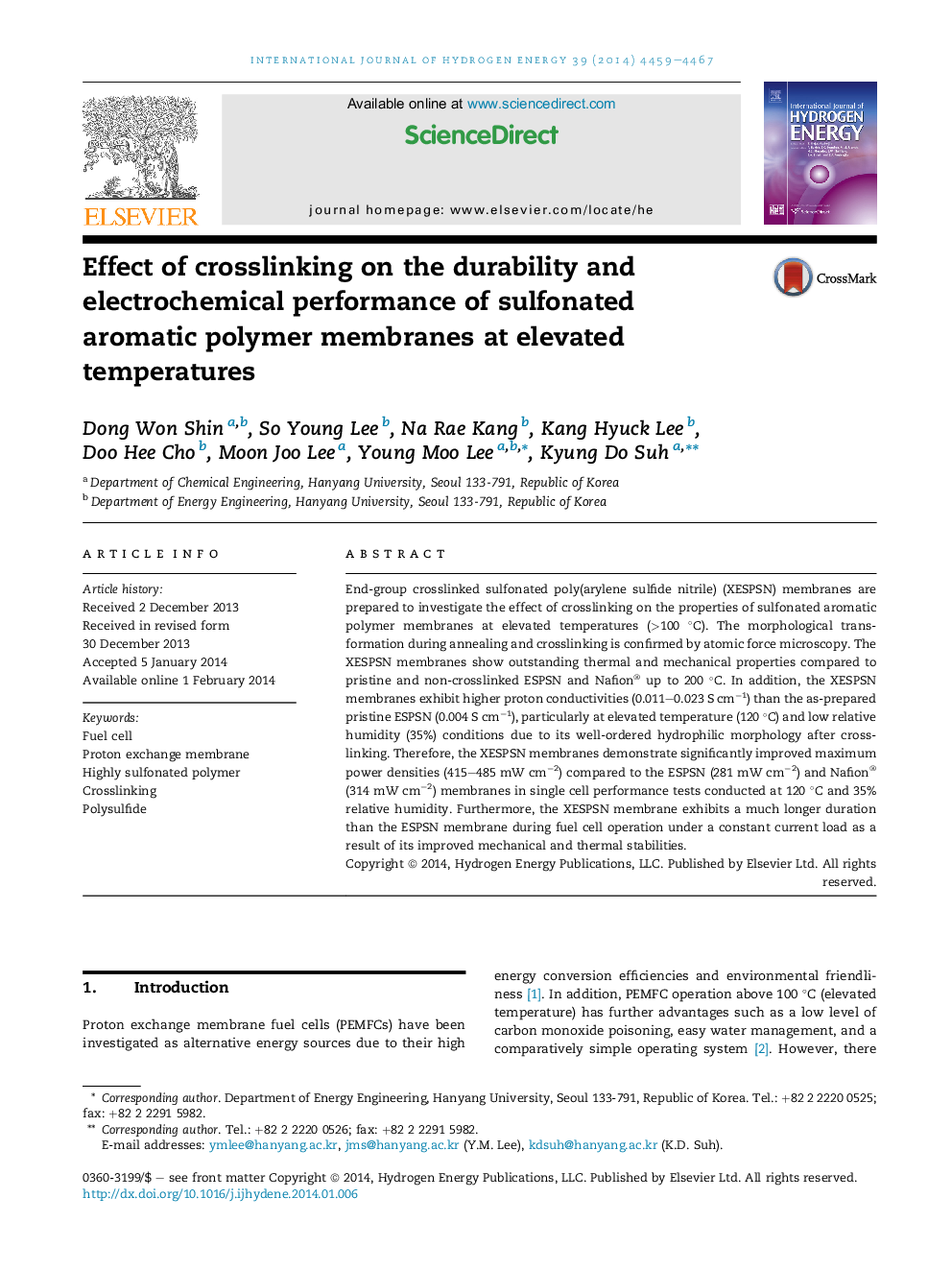| Article ID | Journal | Published Year | Pages | File Type |
|---|---|---|---|---|
| 1270536 | International Journal of Hydrogen Energy | 2014 | 9 Pages |
•Crosslinked membranes show enhanced thermal and mechanical stability.•Crosslinked membranes outperform non-crosslinked membrane at 120 °C and 35% relative humidity.•Crosslinking improves durability during fuel cell operation at 120 °C and 35% relative humidity.
End-group crosslinked sulfonated poly(arylene sulfide nitrile) (XESPSN) membranes are prepared to investigate the effect of crosslinking on the properties of sulfonated aromatic polymer membranes at elevated temperatures (>100 °C). The morphological transformation during annealing and crosslinking is confirmed by atomic force microscopy. The XESPSN membranes show outstanding thermal and mechanical properties compared to pristine and non-crosslinked ESPSN and Nafion® up to 200 °C. In addition, the XESPSN membranes exhibit higher proton conductivities (0.011–0.023 S cm−1) than the as-prepared pristine ESPSN (0.004 S cm−1), particularly at elevated temperature (120 °C) and low relative humidity (35%) conditions due to its well-ordered hydrophilic morphology after crosslinking. Therefore, the XESPSN membranes demonstrate significantly improved maximum power densities (415–485 mW cm−2) compared to the ESPSN (281 mW cm−2) and Nafion® (314 mW cm−2) membranes in single cell performance tests conducted at 120 °C and 35% relative humidity. Furthermore, the XESPSN membrane exhibits a much longer duration than the ESPSN membrane during fuel cell operation under a constant current load as a result of its improved mechanical and thermal stabilities.
Graphical abstractCrosslinked membrane with high degree of sulfonation showed enhanced durability and electrochemical performances particularly at elevated temperature and low relative humidity (120 °C, 35% RH).Figure optionsDownload full-size imageDownload as PowerPoint slide
